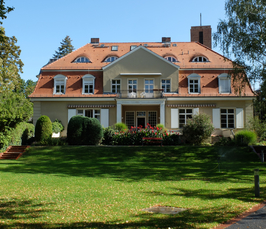Hot Electrons in Surface Chemistry: From Molecular Scattering to Plasmonic Chemistry
- TH Department Online Seminar
- Date: Jun 16, 2022
- Time: 02:00 PM (Local Time Germany)
- Speaker: Prof. Reinhard J. Maurer
- Department of Chemistry, University of Warwick, United Kingdom
- Location: https://zoom.us/j/99251342062?pwd=N0Z5M1draDdFcVVyOGpHZkRKaDZCQT09
- Room: Meeting ID: 992 5134 2062 | Passcode: 172419
- Host: TH Department

Short-lived excited (hot) electrons can measurably affect molecule-metal reactions by introducing energy dissipation, dynamical steering effects, and by contributing to state-dependent reaction probabilities. [1] Hot electrons, created by plasmonic excitation upon light exposure, can selectively activate chemical reactions at metal catalyst surfaces. I will present our recent efforts to establish molecular dynamics methods able to capture nonadiabatic and quantum effects at metal surfaces. We employ a range of methods to capture hot electron effects such as molecular dynamics with electronic friction and surface hopping dynamics. By combining linear response electronic structure calculations [2] with high-dimensional machine-learning representations, [3] we are able to perform ensemble-averaged nonadiabatic dynamics at surfaces. I will showcase this for the vibrational state-to-state scattering of NO on Au(111), [4] where we can identify the regimes in which electronic friction is valid. I will also provide a detailed analysis of the limitations of the existing approach and our ongoing efforts to include quantum tunnelling effects, memory effects, and explicit excited-state effects to capture the dynamics of light-driven hot-electron chemistry.
[1] Bartels et al, Chem.
Sci. 2, 1647−1655 (2011)
[2] R. J. Maurer, M. Askerka, V. S. Batista, J. C. Tully, Phys. Rev. B 94,
115432 (2016)
[3] Y. Zhang, R. J. Maurer, B. Jiang, J. Phys. Chem. C 124,
186-195 (2020)
[4] C. L. Box, Y. Zhang, R. Yin, B. Jiang, R. J. Mauer, JACS Au 1, 164–173 (2021)